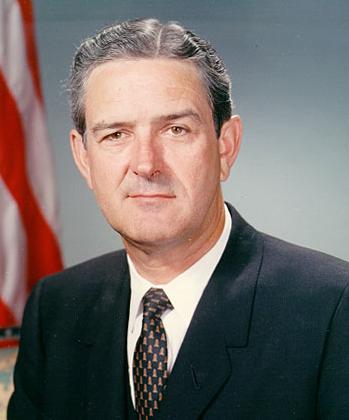John Connally
(Democratic)
1967-1973
Serving nearly twelve years in the Senate, the former Governor decided to run again for Governor, after Price Daniel opted out of running again. He would win virtually unopposed. His second stint as Governor of Texas would largely come to be divided into two periods.
The first period would be marked by marked goodwill and cooperation with President Ford. In it, he sought to help heal his state and country, which was still reeling from the death of President Nixon, but he also sought to keep order in the face of the race riots that had been plaguing the country. However, in all of this, he allowed many of the actual powers of Governor to fall onto Lieutenant Governor John Tower, despite his second in command being a Republican (the vast power that the Lieutenant Governor holds today is largely due to John Connally, despite the process being started by Governor Shivers).
This goodwill between President Ford and Governor Connally was such that in late 1967, the President offered Connally the position of Secretary of Treasury. However, sensing that this was largely to allow John Tower to ascend to the Governorship, Connally would turn down this offer.
The second period of his second stint as Governor would begin with the reelection of President Ford in 1968, and would be one of direct contrast to the goodwill seen before. Governor Connally became viciously critical of President Ford for failing to take decisive action on the riots within the country.
Governor Connally would especially become critical of President Ford for getting the United States entangled in the Syrian Civil War, especially after it came out that the attempted coup in Syria in early 1970 was largely a result of a joint Israeli-American effort within the country. As anti-draft and anti-war riots ramped up, Governor Connally was sure to show his high regard for what he would dub in his Presidential Campaign as “law, justice, and order” as well as for “peace, at home and abroad”.
After reelection in 1970, John Connally announced that he would not run for another term as Governor, leaving most observes to expect what came next from him. With power largely resting with the Lieutenant Governor anyways, John Connally began his campaign for President. After securing the nomination, Senator Birch Bayh was selected to be his running mate. He would go on to beat Vice President Nelson, becoming the first President to run from Texas as well as the first Democratic President in 20 years.








